The most useful polyethylene pipes for agricultural irrigation
The unique properties of the polyethylene pipe, Compared with other types of pipes, the growth rate of this product's use in agricultural fertilizer and pesticide pipelines and water distribution networks is much higher than that of other products.
Durable and high strength, easy installation, low slump, long life, light weight and durability against sun rays, corrosion resistance, hygiene and non-toxicity and high diversity of sizes are just some of the advantages of polyethylene pipes.
Polyethylene pipes are used on farms around the world. Various types of pipes are produced and marketed.irrigation connections of orchards and farms through which the level of water production can be controlled.
Advantages of using polyethylene pipes
This results in controlling the amount of fertilizers and pesticides needed by plants, and prevents these resources from disappearing. Another important aspect is that a plant cannot be impregnated with too many toxins and pesticides, and the polyethylene pipes prevent this.

Agricultural polyethylene pipes have the ability to operate the distribution and transmission of chemical fertilizers through the flow of water and therefore also increase the efficiency of fertilizer consumption.
It also prevents the creation of unwanted moisture in gardens and farms and, as a result, prevents the appearance of some diseases such as parasites and fungi on farms.
The reduction in costs associated with installing flotation and irrigation management systems is greatly improved. It increases the speed, volume, and pressure of clean water transmission to agricultural products in a fully controlled manner.
Reduces water loss and water leaks compared to other traditional plumbing systems. Increases the efficiency of teams and employers compared to polyethylene. Reduces the risk of water diversion. Reduces repair and maintenance costs.
Different types of polyethylene pipes in agriculture
The polyethylene pipes and their connectors (fittings) vary greatly in size and working pressure. Therefore, specific tubes will be used depending on the need and application.
Below is a list of polyethylene pipes and connectors most commonly used in agriculture and horticulture:
12mm Pipe Agricultural Drip Irrigation

This has a pressure of 2.5 bar. The coils are 25m, 50m and 100m long and the polyethylene pipe size is 12mm and It comes without gaps and is a third in its entirety. . Made in Spain.
16mm Pipe Agricultural drip irrigation

This one has a pressure of 2.5 bar. The coils are 25 m, 50 m, and 100 m long, and the polyethylene tubing is 16 mm thick. and It comes without gaps and is a third in its entirety. . Made in Spain.
18mm Pipe Agricultural drip irrigation
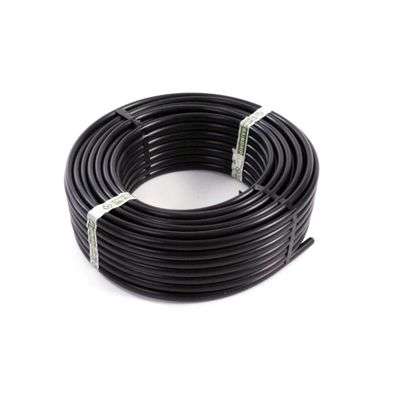
This one has a pressure of 2.5 bar. The coils are 25 m, 50 m, and 100 m long, and the polyethylene tubing is 18 mm thick. and It comes without gaps and is a third in its entirety. . Made in Spain.
20mm Agricultural polyethylene pipe
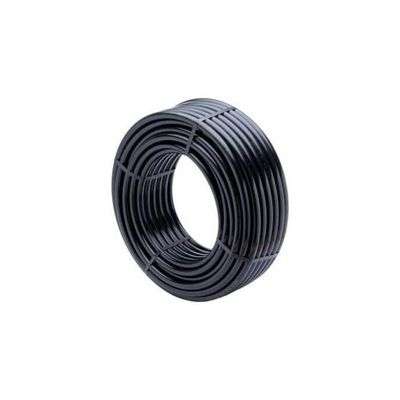
This has a pressure and wall thickness respectively of: 2.5 bar, 1.2mm; 3 bar, 1.4mm; 4bar, 1.7mm; 6 bar, 2 mm; 10 bar, 3 mm. Coils are available in 25 m, 50 m, 100 m, and 200 m lengths. The polyethylene tubing is 20 mm in size and is seamless and fully bonded. Made in Spain.
25mm Agricultural polyethylene pipe

This has a pressure and wall thickness respectively of: 2.5 bar, 1.6mm; 4 bar, 2 mm; 6 bar, 2.3mm; 10 bar, 3.5mm. Some coils of 25m, 50m and 100m and the size of the polyethylene pipe It is 25mm thick and comes without gaps and is completely round. Made in Spain.
Properties of high-density polyethylene
High-density polyethylene (HDPE) is a thermoplastic polymer produced from the monomer ethylene. With a high strength-to-density ratio, HDPE is used in the production of plastic bottles, corrosion-resistant pipes, geomembranes, and plastic lumber.
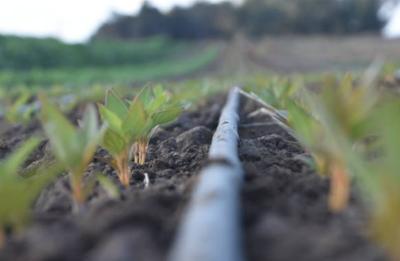
HDPE is known for its high strength-to-density ratio. The density of HDPE is typically around 930 and 970 kg/m3. Although the densities of HDPE and low-density polyethylene are actually very similar, HDPE has little branching.
The difference in strength is greater than the difference in density, which gives HDPE greater strength. It is firmer and more opaque and can withstand higher temperature environments. The lack of branching is ensured by proper selection ofcatalysts and reaction conditions.
The physical properties of HDPE can vary depending on the molding process used to manufacture a specific sample; one determining factor is the international standardized test methods used to identify these properties for a specific process.
Because of these desirable properties, pipes constructed of HDPE are ideal for drinking water and wastewater (stormwater and sewage).
Learn more about theSolenoid valves for irrigation
Applications of high-density polyethylene
HDPE is also used for cellular liners in Subtitle D sanitary landfills, where large sheets of HDPE are extrusion welded or wedge welded to form a homogeneous chemical-resistant barrier.
HDPE is preferred by the pyrotechnic trade for mortars on steel or PVC pipes, being more durable and safer: HDPE tends to tear rather than breaking and turning into shrapnel like other materials.
Thebottles Milk jugs, jugs and other hollow products manufactured by blow molding are the most important application area for HDPE, since they represent a third of world production, that is, more than 8 million tons.
To download this article in a PDF file clickHERE
Any questions about installation or assembly, please contact the technical team atwww.https://latiendadeljardin.com/
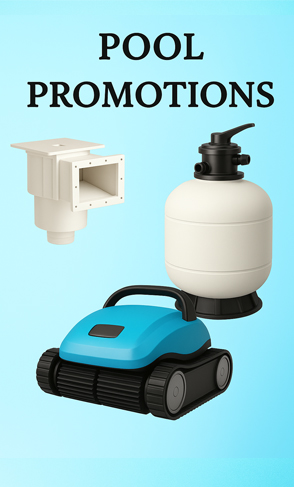






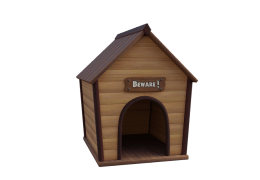

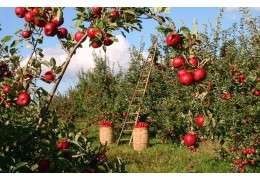

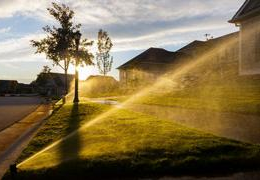
Leave a comment